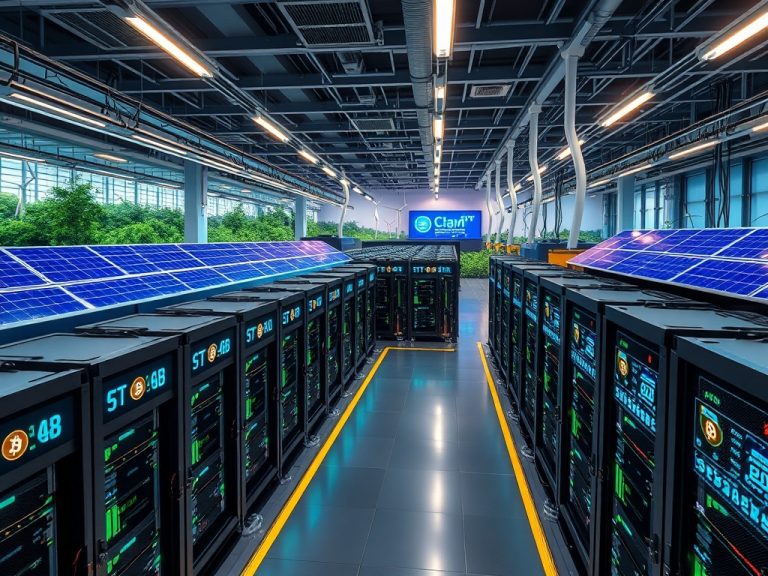
Introduction
Bitcoin mining is a central part of the Bitcoin network, responsible for creating new bitcoins and confirming transactions. This process involves solving complex math problems, requiring significant computational power and substantial energy. As Bitcoin has gained popularity over the years, understanding the economics of mining has become increasingly important for investors, miners, and users alike.
How Bitcoin Mining Works
Bitcoin mining is a competitive process where miners race to solve cryptographic puzzles. The first miner to solve a puzzle gets to add a new block of transactions to the blockchain, a public ledger of all transactions. In return for their efforts, miners receive rewards in the form of newly created bitcoins and transaction fees.
Key Parts of Mining Economics
- Hash Rate:
- This term refers to the total computational power being used by all miners in the network. A higher hash rate increases the chances of solving the puzzles, leading to more competition among miners.
- Miners with more powerful hardware can achieve a higher hash rate, improving their chances of earning rewards.
- Block Rewards:
- When Bitcoin was first launched, miners received 50 bitcoins for each block they added. However, this reward halves approximately every four years in an event known as “halving.”
- As of now, the reward is 6.25 bitcoins per block. Halving reduces the rate at which new bitcoins are created, impacting miners’ profits over time.
- Transaction Fees:
- In addition to block rewards, miners collect fees for processing transactions. When users send bitcoins, they can include a fee to incentivize miners to prioritize their transactions.
- As the block reward decreases, transaction fees may become a more significant source of income for miners.
- Electricity Costs:
- Mining requires a substantial amount of electricity, making energy costs one of the most critical factors in determining profitability.
- Depending on the location, electricity prices can vary significantly, affecting the viability of mining operations.
- Mining Difficulty:
- The Bitcoin network adjusts the difficulty of the puzzles every two weeks to ensure that new blocks are added approximately every 10 minutes.
- As more miners join the network and increase the total hash rate, the difficulty rises, making it harder to mine new blocks.
Economic Factors Affecting Mining Profitability
1. Bitcoin Price Changes
The price of bitcoin is one of the most crucial factors affecting mining profitability. When the price rises, mining becomes more attractive, leading to increased competition as more miners enter the market. Conversely, when the price falls, mining can become unprofitable, pushing less efficient miners out of the network.
2. Hardware Costs
Investing in mining hardware is essential for success. ASIC miners are specialized machines designed for efficient bitcoin mining. However, these machines can be expensive, and their prices fluctuate based on demand and technological advancements. As newer and more efficient models are released, older hardware may become obsolete, necessitating ongoing investment.
3. Government Regulations
The regulatory environment surrounding bitcoin mining can vary greatly between countries. Some governments encourage mining by offering tax incentives and cheap electricity, while others impose strict regulations or outright bans. Miners must stay informed about the legal landscape in their regions to avoid potential pitfalls.
4. Energy Sources
The source of energy used for mining plays a significant role in profitability. Miners who can access renewable energy sources, such as hydroelectric or solar power, often enjoy lower costs compared to those reliant on fossil fuels. This difference in energy sources can significantly impact a miner’s bottom line.
Environmental Concerns
The energy consumption of bitcoin mining has raised significant environmental concerns. Critics argue that the carbon footprint of mining operations contributes to climate change. In response, many miners are exploring sustainable energy options to mitigate their environmental impact. Some are investing in renewable energy projects or locating their operations in areas with abundant clean energy.

The Future of Bitcoin Mining
The future of bitcoin mining is uncertain due to a variety of factors, including technological advancements, regulatory changes, and market dynamics. As the block reward continues to decrease, miners will increasingly depend on transaction fees for their income. This shift may lead to more innovation and optimization in mining operations, as miners seek to remain profitable in a changing landscape.
Potential Trends
- Increased Efficiency:
- As technology advances, miners will likely invest in more efficient hardware and energy solutions, reducing their operational costs.
- Decentralization of Mining:
- There may be a trend toward smaller, decentralized mining operations as individuals and small groups seek to participate in the network, reducing reliance on large mining farms.
- Regulatory Developments:
- Changes in government policies related to cryptocurrencies and mining could significantly impact the industry. Miners will need to adapt quickly to new regulations to remain compliant.
- Sustainable Practices:
- The push for sustainability may lead to more miners adopting green energy solutions, which could improve the overall perception of bitcoin mining and its environmental impact.
Conclusion
Understanding the economics of bitcoin mining is essential for anyone interested in the cryptocurrency space. As the market evolves, miners must adapt to changing conditions to remain profitable. The interplay of technology, energy costs, and regulatory frameworks will shape the future of bitcoin mining. As we look ahead, it will be crucial for miners to embrace innovation and sustainability to navigate this dynamic landscape successfully.






